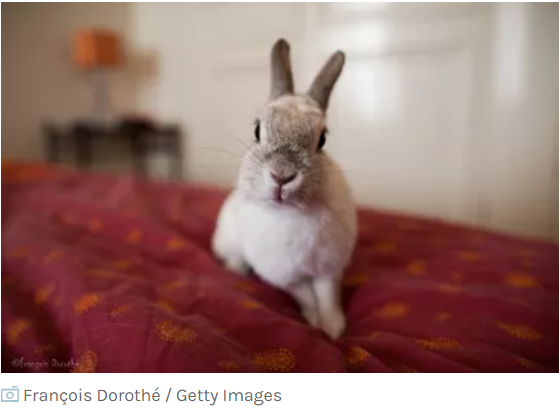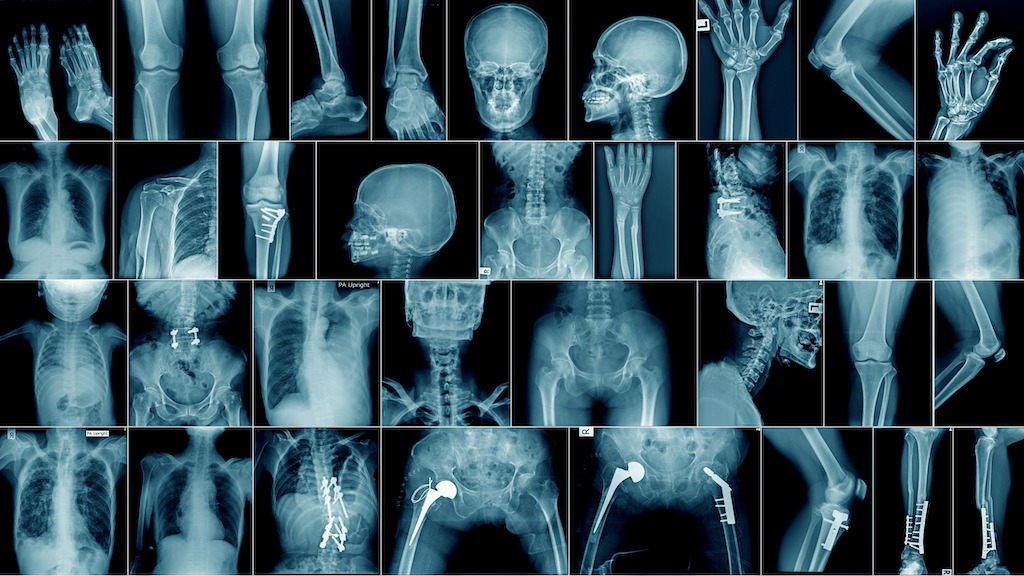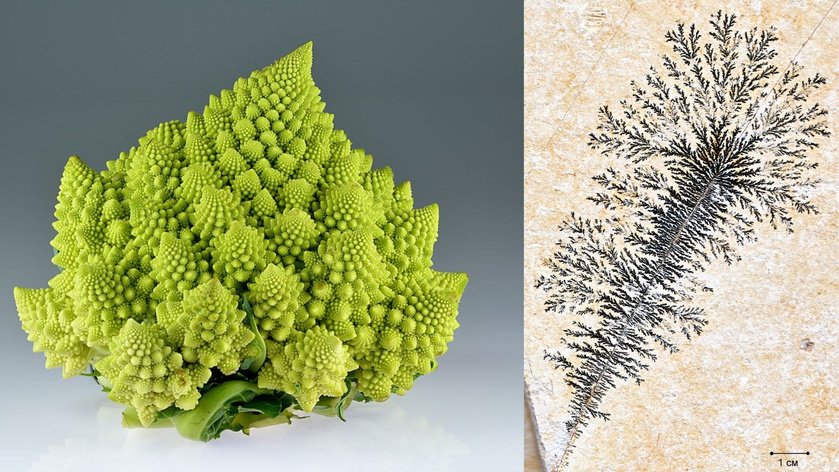Welcome again to Pet Friday! We made it! Today we look at some smaller pets for those who are city slickers and live in apartments. The following is from www.thesprucepets.com and written by LIANNE MCLEOD, DVM:
"Exotic pets are often compact, quiet, and don't require outdoor space, making them ideal pets for apartment living since they don't bother nearby neighbors or damage your home. They are also just as fun and loving as traditional pets like dogs and cats. Browse through 12 types of exotic pets and why they are suitable for apartments, condominiums, and other small living spaces.
Tip
Local laws also might prohibit certain exotic animals. Know which species you can keep in your town or city before bringing them home.
Rabbits
There are nearly 50 breeds of rabbits that people like to keep as a pet. Most are social animals that want to keep you company. Rabbits are a suitable option for apartment living since they can be litter-box trained, groom themselves, and are relatively quiet. Many people allow their rabbits to roam free in their homes, which is a good way for them to get exercise. One drawback to keeping rabbits is that they like to chew and dig. You will need to bunny-proof your home by making sure there are no exposed cords and only allowing the rabbit to roam in carpet or rug-free rooms.
Species Overview
LENGTH: 9 to 17 inches
WEIGHT: 2 pounds to 16 pounds
PHYSICAL CHARACTERISTICS: Small and furry mammals with long ears, short fluffy tails, and strong, large hind legs; coats can vary in color from whites to browns, grays, and black, and by fur length, from short to long
Ferrets
Ferrets love to play with humans and each other. To accommodate their playful nature, provide them with a large cage. They make excellent apartment dwellers because they sleep most of the day while the owner is away for the day. They are quiet creatures but also like to hide and get into mischief. You will need to make sure your home is ferret-proofed to prevent escapes or unsafe hiding spots (like in the oven).
Species Overview
LENGTH: 13 to 16 inches long
WEIGHT: Up to 4.5 pounds
PHYSICAL CHARACTERISTICS: Common variations include white, sable, cinnamon, and chocolate-colored slinky bodies with white foreheads, muzzles, and throats; black feet.
Rats
Rats are friendly, quiet, and intelligent animals. Their small size and relatively easy care make them perfect for smaller homes. Their cage needs are not too demanding: about 2 cubic feet per rat. They tend to be easily tamed and often like to hang out on people's shoulders or laps. Rats will likely sleep most of the day if you leave the house. They are most active at night but will wake for interaction during the day.
Species Overview
LENGTH: 9 to 11 inches, plus a tail of 7 to 9 inches
WEIGHT: Up to 2 pounds
PHYSICAL CHARACTERISTICS: Slender bodied with a pointed head, large eyes, and prominent, thinly furred ears; colors variations include brown, black, tan, gray, white, Siamese, blue, silver black, silver fawn, lilac, cinnamon, black-eyed white, cinnamon pearl, lynx, silver agouti, silver lilac, and blaze
Mice
Mice do not require a lot of space or a large cage. Their size requirements are just one of the reasons why they make great pets for small spaces. They are also quiet, fastidious self groomers, and they are relatively easy to care for. They are also intelligent, and their playful antics are fun to watch. While they are skittish, they can be tamed if handled regularly and hand-fed.
Species Overview
LENGTH: 6 to 7 inches
WEIGHT: 1 to 2 ounces
PHYSICAL CHARACTERISTICS: Pointed snout, small rounded ears, a body-length scaly tail; color variations include brown, black, tan, gray, and albino
Hamsters
No-pet apartment leases usually allow hamsters, and they are an ideal apartment pet since they do not require a lot of space. They are quiet, clean, low maintenance, and don't shed. Most allergy sufferers can live comfortably with a hamster in the house.1 Hamsters are easy to tame with regular handling. All a hamster needs is a 2-cubic-feet cage equipped with an exercise wheel, items to chew, absorbent bedding, a hiding spot, food, and water.
Species Overview
LENGTH: 2 to 13 inches
WEIGHT: 0.5 ounce to 10 ounces
PHYSICAL CHARACTERISTICS: Short tails, stubby legs, and small ears; color variations include black, grey, brown, white, yellow, red, or a mixture of several colors
Guinea Pigs
Guinea pigs crave socialization and are typically easy to handle. They make a "wheek" sound as a vocalization, but it is not loud enough to disturb neighbors in an apartment setting. Their enclosures are also a manageable size. At the minimum, these rodents need a cage that encompasses about 7-8 square feet. Height is not critical; they don't tend to climb, so it does not need to be taller than a foot or 18 inches. They appreciate out-of-cage time to socialize, explore, and play. Like other pets allowed to roam in your home, make sure there are no exposed wires or toxic plants and protect wooden fixtures.
Species Overview
LENGTH: 8 to 16 inches
WEIGHT: 1.5 to 2.5 pounds
PHYSICAL CHARACTERISTICS: Small, stout bodies with no tail, a large head with large and alert eyes, strong, short legs with four toes on their front feet and three on the back, all with sharp claws; color variations include black, beige, chocolate, cream, cinnamon, gold, lemon, lilac, red, silver, and white
Reptiles
Reptiles like smaller lizards and snakes are not as social as mammals, but they can be good for small spaces. They make no noise and are relatively easy to care for. Lizard species that are good for beginners include leopard geckos, crested geckos, house geckos, bearded dragons, and anoles. Snake species that do not require large enclosures include corn snakes, king snakes, milk snakes, and ball pythons.
Species Overview
LENGTH: 1 inch to 24 inches (smaller lizard species); up to 6 feet (common pet snakes)
WEIGHT: 0.5 ounce to 1 pound (smaller lizards); 1 to 5 pounds (common pet snakes)
PHYSICAL CHARACTERISTICS: Cold-blooded; scales instead of skin; come in a variety of colors
Hedgehogs
Hedgehogs do not need a vast cage; a good size for an enclosure is at least 2 feet by 3 feet. Primarily nocturnal, they will not mind if you are away during the day. Hedgehogs are quiet and produce very little dander, making them the right pet for people with allergies. They're typically gentle and generally solitary. A drawback is that there are some parts of the U.S. where they are illegal or require permits; check your state laws on exotic pets before you adopt one.
Species Overview
LENGTH: 4 to 12 inches
WEIGHT: 0.5 to 2.5 pounds
PHYSICAL CHARACTERISTICS: Cone-shaped faces, short legs, bodies covered in spikey hair called spines (looks like porcupine quills), can roll into a ball
Frogs
Many frog species don't need much space, so they are an ideal choice for small apartments. The ideal tank size for most frogs is a 10-gallon or 20-gallon tank. If you are looking for a pet to look at and display, then this is the right choice for you. They are also low-maintenance pets, only eating a few times a week. There are several types of pet frogs: aquatic frogs (African clawed frogs), semi-aquatic frogs (oriental fire-bellied toads), tree frogs (American green tree frogs), and large but sedentary frogs (Pacman frogs). Some male frogs sing, so they're not a completely quiet pet, but the sound is not loud enough to offend the neighbors.
Species Overview
LENGTH: 1 to 13 inches
WEIGHT: 1 ounce to 6 pounds
PHYSICAL CHARACTERISTICS: Two bulging eyes; strong, long, webbed hind feet used for leaping and swimming; smooth or slimy skin; colors are varied
Hermit Crabs
Hermit crabs are a low-commitment pet. They are great for apartment living since they make no noise, are hypoallergenic, and low-maintenance. Hermit crabs are interesting to watch; they move from one shell to another. They are social and do best when placed with other hermit crabs if their tank is spacious enough. House an individual in a 10- to 20-gallon tank.
Species Overview
LENGTH: 1 to 6 inches
WEIGHT: 7 to 18 ounces
PHYSICAL CHARACTERISTICS: Outer shell; 10 jointed legs, the front two are of different sizes; large left claw is used for defense; smaller right claw scoops food and water
Tarantulas
If you’re a fan of spiders, a pet tarantula can be a fascinating addition to your home. Tarantulas are quiet and typically only need a 10- to 20-gallon aquarium to thrive. They are low maintenance, only need food every other day or so, and do not mind if you are not around much. Although the venom of a pet tarantula is only mildly toxic (similar to a bee sting), you should not handle it.
Species Overview
LENGTH: 2 to 10 inches
WEIGHT: 1 to 3 ounces
PHYSICAL CHARACTERISTICS: Hairy bodies with long, hairy legs; two visible fangs; most are brown, although some varieties are cobalt blue, black with white stripes, or multicolored
Chinchillas
Chinchillas are small rodents with playful personalities. They make good apartment dwellers since they are clean and relatively odor-free. They are nocturnal, so if you are not home during the day, they will not miss you much. With gentle handling from a young age, they can bond closely with you. House a single chinchilla in a cage that is at least 2 feet by 2 feet.
Species Overview
LENGTH: 9 to 15 inches
WEIGHT: 1 to 3 pounds
PHYSICAL CHARACTERISTICS: Large, black eyes and bushy tails; luxuriously soft; silver, yellow-gray, bluish-gray, white, beige and black fur
Exotic Pets to Avoid
Exotic pets can be beautiful, unique, and some can be trained to do tricks, talk, or retrieve items for you. Generally, pets that require a large enclosure and outside-of-cage time like parrots need a space more extensive than a small apartment for free-flying. Some birds like macaws and Amazons are too loud, known for disrupting the neighbors.
Monkeys are exciting, but a significant downside is they need a lot of mental stimulation and exercise. Primates often fulfill their enrichment requirements by destroying property or wreaking havoc in your house. Similarly, pets like pot-bellied pigs might be naturally inclined to burrow and damage a rental property. Aquatic turtles may be okay to keep in an apartment as babies, but they can grow very large and may require a tank that is at least 120 gallons, which can be a drain on space.
FAQ
What small pets like to cuddle?
Guinea pigs, rabbits, and ferrets love to cuddle with humans.
What small pets like to be held?
Guinea pigs and ferrets enjoy being held.
What are the friendliest small pets?
Ferrets, hands down, are the most sociable small pets. They're extremely fun and playful."
So if you cannot have a lovely dog or cat some of the above may be an option. I hope you enjoyed today's post.
Have a wonderful weekend!
Reference: https://www.thesprucepets.com/exotic-pets-for-apartment-living-1238589
I have lost a lot of faith with the Medical Community and the Governments over the last several years, but there are a few good things that can raise above the corruption and the pushing of drugs a new approach to heal people. The following is from www.gaia.com and written by Hunter Parsons that does not involve any drug or pushing an ineffective so called vaccine that the drug company is not held accountable in any way but they use sound! The use of sound can regrow bone tissue! Here is the story:
"The future of regenerative medicine could be found within sound healing by regrowing bone cells with sound waves.
The use of sound as a healing modality has an ancient tradition all over the world. The ancient Greeks used sound to cure mental disorders; Australian Aborigines reportedly use the didgeridoo to heal; and Tibetan or Himalayan singing bowls were, and still are, used for spiritual healing ceremonies.
Recently, a study showed an hour-long sound bowl meditation reduced anger, fatigue, anxiety, and ...
Not a fan of a Defense Agency studying Anti-Gravity and other Exotic Tech, but if the commercial world and make this technology cheap that will change our world yet again. The following is about three minute read and from www.gaia.com. The below was written by Hunter Parsons:
"Wormholes, invisibility cloaks, and anti-gravity — it’s not science fiction, it’s just some of the exotic things the U.S. government has been researching.
A massive document dump by the Defense Intelligence Agency shows some of the wild research projects the United States government was, at least, funding through the Advanced Aerospace Threat Identification Program known as AATIP.
And another lesser-known entity called the Advanced Aerospace Weapons System Application Program or AAWSAP
The Defense Intelligence Agency has recently released a large number of documents to different news outlets and individuals who have filed Freedom of Information Act requests.
Of particular interest are some 1,600 pages released to Vice News, which ...
As our technology gets better we are discovering more about the history of mankind and pushing the timeline back further and further. The following article is from www.gaia.com and written by Michael Chary that discusses this new find that changes the historical timeline:
"Over the past decade, there have been a number of archeological revelations pushing back the timeline of human evolution and our ancient ancestors’ various diasporas. Initially, these discoveries elicit some resistance as archeologists bemoan the daunting prospect of rewriting the history books, though once enough evidence is presented to established institutions, a new chronology becomes accepted.
But this really only pertains to the era of human development that predates civilization — the epochs of our past in which we were merely hunter-gatherers and nomads roaming the savannahs. Try challenging the consensus timeline of human civilization and it’s likely you’ll be met with derision and rigidity.
Conversely, someone of an alternative...
Not sure if you have heard of a show on YouTube called "The Why Files". If not you should check it out it is interesting and has some humor with it on different subjects. Last weeks was on a different theory how the Universe works and how main stream Science is attempting to shut it down like is always seems to do if it goes aguest some special interest. Today it is akin to what happened to those who questioned the Earth was the Center of the Universe that main stream so called Science all believed during the Renaissance period, They called any theory that the Earth was not the Center of the Universe misinformation. Does this sound familiar today? People laughed and mocked people like Leonardo da Vinci, Nicolaus Copernicus, Georg Purbach as crack-pots, conspiracy theorists, nut-jobs and they were suppressed and even imprisoned for their radical thoughts and observations. Again it sounds like today in so many ways. In any event this is a good one to ponder and see even if a bad idea ...
Seemingly chaotic systems like the weather and the financial markets are governed by the laws of chaos theory.
We all have heard about chaos theory, but if you have not or have forgotten what chaos theory is well here you go from interestingengineering.com:
"Chaos theory deals with dynamic systems, which are highly sensitive to initial conditions, making it almost impossible to track the resulting unpredictable behavior. Chaos theory seeks to find patterns in systems that appear random, such as weather, fluid turbulence, and the stock market.
Since the smallest of changes can lead to vastly different outcomes, the long-term behavior of chaotic systems is difficult to predict despite their inherently deterministic nature.
As Edward Lorenz, who first proposed what became commonly known as the Butterfly Effect, eloquently said, "Chaos: When the present determines the future, but the approximate present does not approximately determine the future.""
You may have heard the term about chaos theory as a butterfly flaps its wings in Brazil,...
I for one have lost trust in Medical Doctors due to COVID and reflection that they seem to push pills for everything and untested so called vaccines that is using a unproven technology because the Government and the Medical Boards of the State told them to. There are a very few exceptions. Thus they do not address the key problem just prescribe more and more pills to keep you alive an sick longer for them and Big Phama to profit from you. Will AI do any better? Well that depends on what was used for the training of AI. If it also pushes pills and vaccines without question then you have the same problems noted above. However, if the AI Training includes all possible forms of treatment and they zero in on the right issues for the true problem then there is possibilities they would be way better than most of the current Medical Doctors today.
The following is from an article from interestingengineering.com and written by Paul Ratner:
"A new study looks at how accurately AI can diagnose patients. We interview the researcher, who weighs in on AI's role ...































